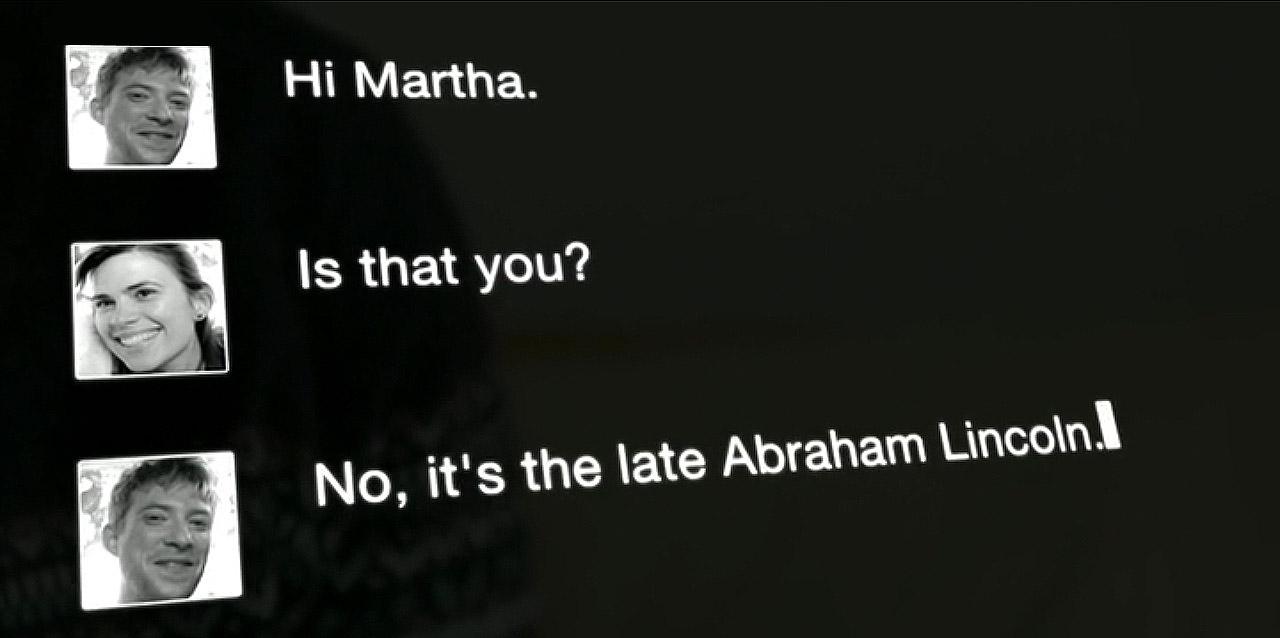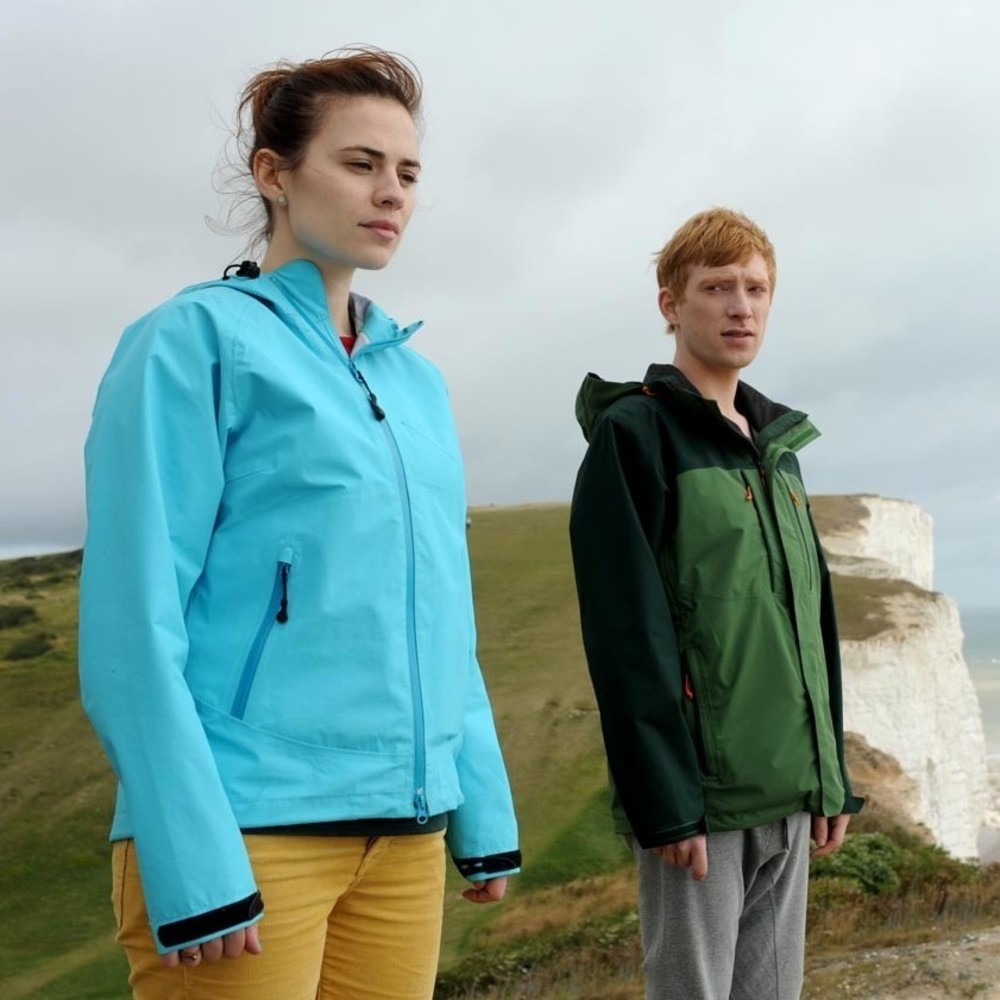On 28 November 2015, a 34-year-old man called Roman Mazurenko was hit by a speeding Jeep in central Moscow. He was rushed to the nearest hospital but died of his injuries. His best friend Eugenia Kuyda arrived just before he passed, just missing the chance to speak with him one last time.
She spent the next three months collecting text messages that Mazurenko’s friends had stored on their phones and handed them over to the engineers at her software company Luka. After some computer wizardry, involving algorithms and artificial intelligence, Kuyda’s engineers had developed an app that would let her speak to Mazurenko once again. It sounds like an eerie science fiction story and that’s because it originally was…
Two years earlier, Charlie Brooker’s nightmarish TV series Black Mirror had given Kuyda the fictional version. Having made a name for itself with all too realistic stories of a dystopian future, the show’s second series began with an episode that challenged the very nature of death in the digitalised world.
Be Right Back tells the story of a woman called Martha, struggling to come to terms with the death of her social media-addicted boyfriend Ash – who also died in a car accident. She’s introduced to a service that can resurrect Ash as a digital avatar by harvesting his social media posts and text messages.

Although reluctant at first, Martha begins to use the service on her laptop, chatting to digital Ash, who appears as a sort of instant messenger. The more comfortable Martha becomes, the more digital Ash evolves. He goes from app to voice assistant, to robot within the first 30-minutes. But, as Ash develops, it soon becomes apparent that it’s not the real thing. He’s just a collection of data; an echo of thoughts posted online that cannot think freely or for itself. Almost like a digital zombie.
Ever since George Romeo’s classic horror, Night of the Living Dead, the Zombie genre has given us simple guidelines for bringing the dead back to life. Usually, it’s a virus or some sort of radiation exposure, but the Black Mirror version – though it doesn’t strictly define it as a zombie – hit upon an idea for resurrecting the dead that’s unnervingly real.
Real, because the technology is actually available; artificial intelligence and formats like machine learning, where an algorithm reads and translates data or information into actions, are widely used in society and business. It’s powering everything from smartphones to medical equipment. It’s the same technology that’s enabling self-driving cars and voice assistants such as Alexa and Siri on your iPhone.
Eugenia Kuyda is fully aware of this because her company, Luka, specialises in building AI-powered software, mostly chatbots, but when she watched Be Right Back, it left her with mixed feelings, particularly with how far it went.
“She found herself going through the endless text messages Mazurenko had sent her over the years she felt like there was something to work from. She realised she could build a different kind of bot based on Mazurenko, one that simply mimicked his speech patterns.”
“It’s definitely the future and I’m always for the future,” she said. “But is it really what’s beneficial for us? Is it letting go, by forcing you to actually feel everything? Or is it just having a dead person in your attic? Where is the line? Where are we? It screws with your brain.”
For two years, Kuyda had been building her tech company, and its first real chatbot was for online retail. But when she found herself going through the endless text messages Mazurenko had sent her over the years she felt like there was something to work from. She realised she could build a different kind of bot based on Mazurenko, one that simply mimicked his speech patterns.
“On his Facebook page, there really were just a few links,” she says. “I went on his Instagram page and there were no photos. The only thing I could do to remember him was to go to our messenger history, scroll and read it all. That was the closest I could get to feel him. I felt I still had a lot to say, but it’s just kind of weird we don’t have a ritual to say any of that stuff.”
Having taken some 8,000 lines of text from friends and family, the app was shared with them first. Many found the likeness uncanny and felt Kuyda had hit upon something special; chatbots offer a service, either commercial, like bots on retail websites, or novelty household devices like Alexa, but the Roman bot offered a digital ear for users to say something private – in this case, something to Mazurenko that they needed to let out.
This idea, for a chatbot to confide in, has seen the same technology that underpins the ‘Roman’ bot turned around to create Luka’s new app, ‘Replika’, which is an AI like Roman, but one you can build yourself by texting it. The more you chat, the more it learns to be you. Meaning that when you die, you’ll have a Black Mirror-style bot avatar ready to go.
Describing the episode in the book Inside Black Mirror, Brooker seemed to realise the importance of data, long before Mark Zuckerberg was selling yours for advertising. He had an epiphany about digitised memories in the mid-90s after his former flatmate died in a diving accident.
“In the days when you still had limited numbers you could store in a phone, sometimes you’d have to delete things,” he said. “So, I was going through the list, and there was this guy’s name and number. I thought I should delete that, but suddenly I couldn’t. To do that would’ve felt disrespectful, callous and wrong. It was a memento, so I should keep it and find someone else’s number to delete. It was a very ‘Black Mirror’ moment. A lot of Be Right Back stemmed from that: the notion of a souvenir that you know is not real, but which reminds you enough of somebody that it’s painful.”
Today, we call these ‘painful souvenirs’ data, and we’re leaving an unprecedented amount of it online. We post endless pictures and Stories on Instagram, and we tweet multiple times a day. But, while Kuyda and her team only needed text messages to build a digital Roman Mazurenko, the Ash from Black Mirror is created using a wider selection of online communications. His text, his images and even his voice. This is something of a controversial subject within the tech industry at the moment. Earlier this year Google unveiled a creepy voice assistant that could book appointments by mimicking a human voice, simply by adding ‘erm’ between sentences.
A Swedish funeral home caught the attention of the press this year when it announced plans to use voice recognition software and virtual reality to create digital replacements of the dead to help people grieve. “What we would like to find is the voice,” says Charlotte Runius, the CEO and founder of Fenix (pronounced Phoenix). “The goal is to be able to make a conversation, one that feels like a real conversation, but in the beginning, it definitely won’t be able to cover all aspects of human speech and be quite limited to certain topics, like what you would talk about at breakfast for example.
“We have this vision, that when you are old and lonely because your spouse has passed away, you can put on your virtual reality goggles and go have breakfast with them. Of course, you know it’s not for real, but we see it more like a computer game really.” Although still in the planning stage, Fenix has been looking for developers and engineers to help build this haunting service, which they think is more important than making a chatbot that’s just based on simple text alone.
But Kuyda’s text-based chatbot has come uncomfortably close to making Black Mirror a reality. Since announcing the existence of the Roman bot in a post on Facebook, millions have downloaded it to their iPhone. “It’s still a shadow of a person, but that wasn’t possible just a year ago, and in the very close future we will be able to do a lot more,” Kuyda wrote.



